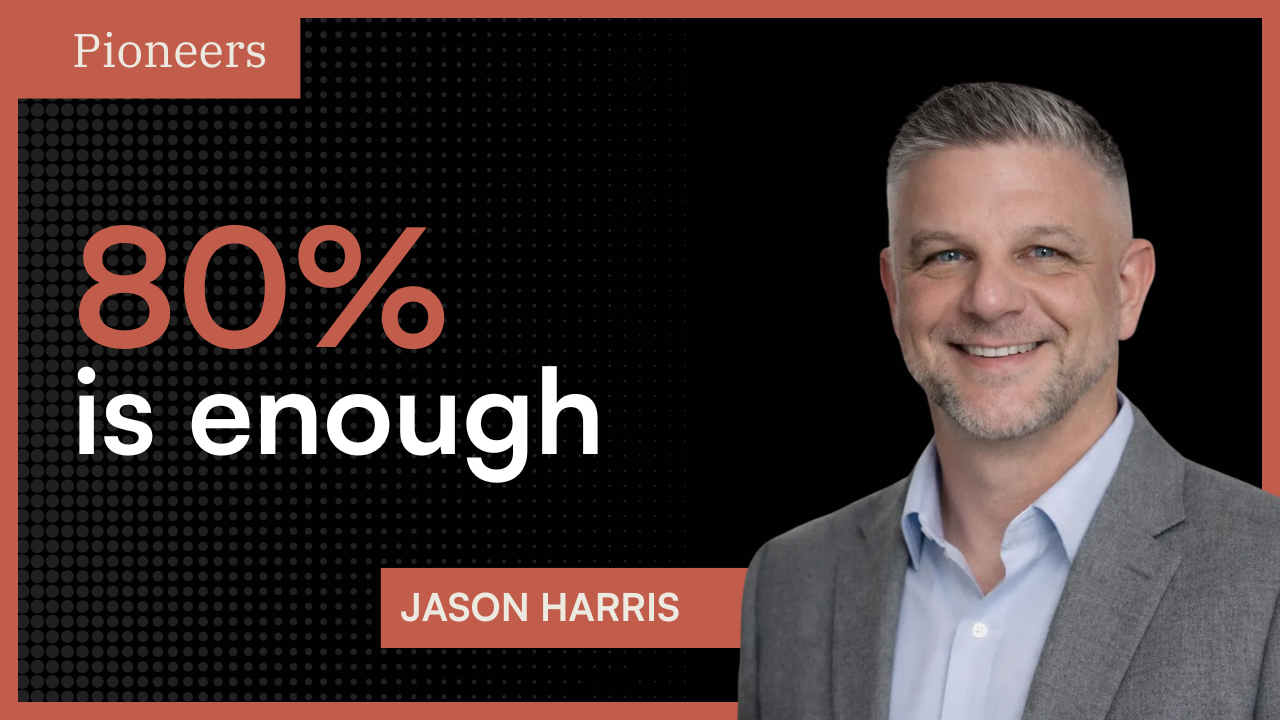This is a summary of an episode of Pioneers, an educational podcast on AI led by our founder. Join 3,000+ business leaders and AI enthusiasts and be the first to know when new episodes go live. Subscribe to our newsletter here.
TL;DR:
- Successful AI adoption starts small, builds trust, and spreads through internal champions and cross-functional alignment.
- Enterprises must rethink workflows before applying AI; many problems are process-based, not just technical.
- Real impact happens beyond the proof of concept stage, where live data and system feedback loops drive learning and outcomes.
- European companies often excel at digital design, while U.S. firms are leapfrogging to AI-first interfaces and simpler interactions.
- AI augments people by removing repetitive tasks and freeing them to focus on high-value, human-centered work.
Before we dive into the key takeaways from this episode, be sure to catch the full episode here:
Meet Jimmy - General Manager at LINKITSYSTEMS
Jimmy Iliohan, General Manager at LINKITSYSTEMS, brings a multidisciplinary lens to enterprise transformation.
With a background in industrial design and enterprise software, Jimmy combines user-centered thinking with operational rigor to help companies scale meaningful innovation.
From redesigning freight customer service workflows to advising major insurers, Jimmy’s work focuses on empowering teams, not just deploying tools.
He emphasizes the importance of mapping real workflows, aligning business and tech teams, and building systems that adapt.
At LINKITSYSTEMS, Jimmy helps global companies identify AI opportunities grounded in customer journeys and legacy realities. Rather than ripping out systems, he advocates for building intelligent layers on top that improve experience and performance.
By fostering a culture of learning and iteration, Jimmy helps organizations move beyond proof of concepts and into measurable impact.
Start With the Workflow, Not the Tech
Jimmy emphasizes that effective AI starts by understanding the actual work, not chasing features. He notes that many companies begin building before fully mapping how their processes work.
“Even if it’s ChatGPT or some other AI solution, sometimes it’s also good to go back, look at the actual workflows,” says Jimmy.
Without that clarity, teams risk digitizing inefficiencies or applying AI where human support is still critical. He believes that by rethinking workflows, businesses can create better handoffs, reduce complexity, and design smarter interventions.
“We noticed people still want a human to help them when something goes wrong.” — Jimmy Iliohan
This people-first approach ensures AI supports real needs instead of creating more confusion or inefficiency.
The Real Work Begins After the POC
While proof of concepts (POCs) are exciting, Jimmy points out that the true challenges emerge when systems are deployed at scale.
“The actual concerns come at the end of the POC,” he says. “Where does the data sit? How accurate is this system going to be?”
These are the questions that determine whether AI adds value or stalls. Enterprises must transition from experimentation to integration, which requires handling live data, working across departments, and aligning expectations.
Jimmy stresses that it is easy to pilot an idea, but much harder to embed it into daily operations.
“The first two weeks are fine,” he explains, “but what happens when customers change behavior?” For him, the POC is just the starting line.
“POCs are easy. Production is where the hard part starts.” — Ankur Patel
AI Enables Human-Centered Efficiency
Jimmy sees AI as a way to amplify, not replace, human connection. “AI is not going to replace people,” he says. “It’s going to replace the tedious tasks.”
These include document triage, routine questions, and back-end administration. By removing these bottlenecks, teams can focus on high-value work that requires empathy, expertise, and creativity.
“It’s about empowering the human relationships within a company and with its customers.” — Jimmy Iliohan
He cautions that automation must be designed thoughtfully to avoid eroding trust or creating new problems.
When built correctly, AI acts as a supportive teammate. “You will be able to see trends earlier, find context faster,” he adds.
This shift makes service better, faster, and more consistent, without losing the human touch.
Why Europe and the U.S. Are Approaching AI Differently
Jimmy observes clear regional differences in how companies are adopting AI. In Europe, the focus has been on building great digital platforms and front ends.
“You go to the Netherlands and they’ve built amazing portals,” he says. However, in the U.S., he sees companies looking to leap ahead by removing the interface altogether. “What you are seeing now in the U.S. is companies that say, ‘Well, why have a front end at all?
Why not let an AI just do it for you?’” Jimmy explains. That shift means less clicking and more voice or email interactions powered by agents.
Both regions are innovating, but with different priorities, Europe on design and process, the U.S. on speed and simplicity.
Build Trust With Small Wins and Champions
For Jimmy, enterprise AI adoption works best when it starts small and builds momentum through trusted relationships. “Start small, build trust, and expand,” he advises.
He shares examples where one business unit or team began using a solution, and others followed quickly after seeing results.
“Others will ask for the same features. There will be more ideas,” says Jimmy. These internal champions become essential for scaling change.
Rather than top-down mandates, successful AI rollouts often grow from within, driven by users who see clear value.
This grassroots approach avoids resistance and creates organic demand. “It’s not about pushing technology,” he adds. “It’s about solving real problems that people feel.” That feeling is what creates buy-in and long-term impact.
.svg)



.svg)
.svg)

.svg)



